14th International Workshop on Seismic Microzoning and Risk Reduction
"Towards an earthquake safer and resilient society". October 23-24, 2025
Invitation
The Organizing Committee of the 14th International Workshop on Seismic Microzoning and Risk Reduction (14th IWSMRR) is happy to invite you to participate in the workshop activities, which will be held at the Engineering Tower of UNAM’s main campus in Mexico City from October 23 to 24, 2025. This Workshop focuses on the discussion of methodologies and results in Earthquake Engineering, Seismology, Seismic Hazard Assessment, and Seismic Risk. It also covers topics such as Earthquake Disaster Mitigation and Management, the use of Seismic Ambient Noise for monitoring, and other related subjects applicable to urban areas.
About
This workshop continues the efforts initiated in 1992 at the first joint Workshop by Japanese and Spanish researchers on seismic microzoning in Granada, Spain. Since then, five meetings have been held in Spain and six more in Japan. In 2010, the workshop took place for the first time in Mexico and the American continent. Mexico will host the workshop again, the 14th edition, and will be glad to gather international scientists working in these areas of Microzonation and Risk Mitigation.
Welcome
Scientists, engineers, disaster mitigation planners, decision-makers, and private sector representatives are invited to participate in and contribute to the scientific sessions, discussions, and other social events scheduled for the 14th IWSMRR.
Special dedication
This year’s edition is dedicated to Professor Emeritus Luis Esteva, celebrating his 90th birthday, for his pioneering and outstanding contributions to Earthquake Engineering.
Preliminary Keynote speakers
| Speaker |
Topic |
| BARD, Pierre-Yves (Institut des Sciences de la Terre, Univ. Grenoble, France) | Can site amplification change with time in urban areas? A case study in the Kanto area, Japan, with a discussion of various potential mechanisms |
| SEMBLAT, Jean-François (ENSTA-Paris) | Seismic surface waves: extraction, simulations, interactions |
| PAOLUCCI, Roberto (Politecnico di Milano, Italy) | Towards physically and mechanically based seismic ground motion and damage scenarios in urban areas |
| HAYASHI, Koichi (Kyoto University, Japan) | Estimating 3d S-Wave Velocity Model From Active And Passive Surface Wave Methods And Horizontal-To-Vertical Spectral Ratios Based On Deep Learning |
| MATSUSHIMA, Shinichi (Kyoto University, Japan) | The variation of uncertainty of estimated ground motions related to the basin characteristics |
| ASKAN, Aysegul (METU, Ankara, Turkey) | Use of Simulated Ground Motions for Enhancing Urban Seismic Resilience in Turkey |
| BAISE, Laurie G (Tufts University, USA) | Lessons learned from high-resolution site characterization in Boston, Massachusetts |
| MOLINA, Sergio (Alicante University, Spain) | Advances in earthquake forecasting and rapid impact for the municipality of Orihuela (Alicante, Spain) |
| ORDAZ, Mario (UNAM, Mexico) | A Possible Future Of Ground Motion Modelling For Engineering Purposes |
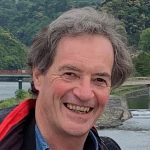
BARD, Pierre-Yves
(Institut des Sciences de la Terre, Univ. Grenoble, France). His primary activity has been research. His interests, initially focused on site effects, have gradually broadened to include strong motion seismology, seismic hazard estimation (with emphasis on probabilistic approaches), wave propagation in heterogeneous media, subsurface and structural monitoring using ambient vibrations, soil-structure and site-city interactions, seismic zonation and microzonation, and their translation into regulatory texts or technical guides and recommendations for engineering applications. They have involved theoretical, numerical and instrumental methodological developments, and examples of applications on real sites, with a particular focus on “frugal” methods that can be used in developing countries or countries with moderate seismicity.
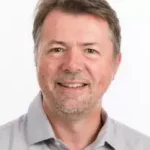
SEMBLAT, Jean-François
(ENSTA-Paris). Fields of expertise: seismology, seismic wave propagation, computational mechanics (FEM/BEM), soil dynamics, dynamic soil-structure interaction, structural dynamics. Teaching: Structural mechanics, Structural dynamics, Seismology and Earthquake Engineering, Master of Mechanics (coordinator), MOOC Fundamentals of Waves and Vibrations, MOOC From Seismology to Earthquake Engineering (new 2022!). Committees: International Society for Soil Mechanics (TC203), French Association for Earthquake Engineering (AFPS), Comité Français de Mécanique des Sols (CFMS). Editorial boards: International Journal of Geomechanics (ASCE), Soil Dynamics and Earthquake Engineering, Polytechnique Insights.
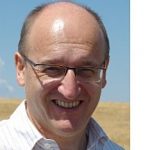
PAOLUCCI, Roberto
(Politecnico of Milan). He has an experience of about 30 years of participation in different national and international research projects, mainly dealing with seismic hazard studies, geotechnical earthquake engineering, dynamic soil-structure interaction, high-performance computing in elastodynamics. Among the most recent activities, he has recently coordinated different research projects and consultant activities for major international companies. He received in 2000 the Shamsher Prakash Award, from the University of Missouri-Rolla, for young (under 40) researchers in earthquake geotechnical engineering, and, in 2006, the Outstanding Paper Award by the Earthquake Engineering Research Institute, California, for the paper “Displacement Specta for Long Periods”, co-authored by E. Faccioli and J. Rey, published in Earthquake Spectra, 2004.
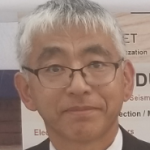
Koichi Hayashi
(Kyoto University). Professor at Disaster Prevention Research Institute, Kyoto University in Uji, Kyoto, Japan. Over the past 33 years, he has worked as a research geophysicist focusing on providing better tools and algorithms for near-surface geophysical methods. He earned a B.S. degree in Earth Sciences from Chiba University in Japan, a M.S. degree in Earth Sciences from the Massachusetts Institute of Technology, and a Ph.D. in Earth Resources Engineering from Kyoto University in Japan. His main research areas are seismic refraction, active and passive surface waves, finite-difference seismic modeling, distributed acoustic sensing, machine learning and traveltime inversion. He is the author of the SeisImager data analysis suite of programs and has incorporated many of his theoretical developments into the software, making SeisImager one of the premier active and passive surface waves, refraction, and downhole data processing packages available today.
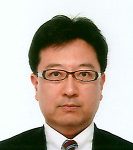
MATSUSHIMA, Shinichi
(Kyoto University). Since April 2016, Shinichi Matsushima became a professor of Structrual Dynamics Section at Kyoto University. Our lab has been change to Seismic Ground Response Section and now is a part of the Research Center for Earthquake Hazards from August 2022.Conducting activities for research and education in Disaster Prevention Research Institute and Cooperation Institute of Architecture – Space Safety Engineering – Earthquake and Tsunami Resistant Design for Structures.
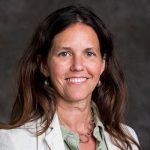
Baise, Laurie
(Tufts University). Professor and the chair of the Department of Civil and Environmental Engineering at Tufts School of Engineering. She is a member of the Geosystems Faculty, and lead investigator in the Geohazards Research Lab. She is also the director of the BSCE degree program. Laurie Baise’s work in the Geohazards Research Lab addresses hazards such as earthquakes and extreme wind, and links predictive models with observational data. She is an expert in earthquake site response and regional seismic hazard mapping. Baise’s recent research focuses on regional mapping for rapid response and loss estimation. Baise and her students are interested in both developing predictive models to predict damage extent and using remotely sensed imagery and automated classification techniques to develop damage extent maps immediately following natural hazard events.
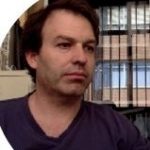
Molina, Sergio
(University of Alicante). He was chief investigator in a National Plan project on new methodologies related to better characterization of ground movement (seismic hazard) and its inclusion in damage and loss scenarios, and he leads the UA group participating in the European project TURNKEY, whose main goal is the forecasting, early warning, and rapid damage assessment due to earthquakes, and its integration with a useful application for civil protection and emergency managers. The results of the conducted research have been reflected in numerous scientific publications (over 40 in high-impact JCR journals), as well as numerous presentations at national and international conferences.
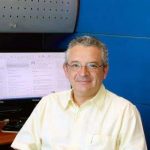
Ordaz, Mario
(UNAM). Civil engineer (1983), Master in Engineering (1986), and Doctor in Engineering (1992) from UNAM. Since 1987, researcher at the Institute of Engineering of UNAM. He has participated in the development of almost all seismic design regulations that have been created in Mexico since 1985, as well as in the preparation of regulations for other countries. He has participated in the development of seismic risk studies, for structural design purposes, in more than 30 important projects. National Prize ‘Nabor Carrillo’ for research in Civil Engineering, ‘Luis Esteva’ Medal awarded by the Mexican Society of Seismic Engineering. He is a Tenured Researcher C at the Institute of Engineering of UNAM, a member of the National System of Researchers Level III.
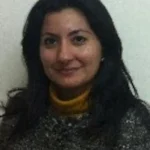
Aysegul, Askan
(Middle East Technical University). Professor of civil engineer, earthquake studies, and applied mathematics. She is the current general secretary of Earthquake Engineering Associaton of Turkey and a member of the National disaster and emergency consultancy board of Turkey. She has led and partipated in several EU projects, Turkish-Japanese bilateral projects and national projects focusing on seismic hazard, risk and site characterization problems. Her international contributions include NSF-QUAKE, NSF SPRU, EU-NERA, EU-Series, EMME and JTRE projects. She holds several administrative positions in education and research.
For contributorsSelect the next button to access the contributions section
Topics
| Category | Topics |
| Seismic Hazard Assessment and Site Characterization | Seismic Site Effects, Microzoning, Strong Ground Motion Modeling, Earthquake and Tsunami Scenarios, Use of emerging technologies for Seismic Hazard Assessment |
| Risk Reduction and Disaster Prevention | Risk Scenarios, Risk Management, Disaster Prevention, Use of emerging technologies for Risk Reduction and Disaster Prevention |
| Miscellaneous related issues | Velocity Structure and Local Seismic Hazard Characterization, Innovation in Ambient Vibration Surveys and their Applications, Near-Fault Ground Motion Factors, Vulnerability Evaluation of Buildings and Historical Heritage, Seismogenic Processes of Seismic Sources, Landslide Risk Assessment |
Program day 1
Day 1: October 23
Time | Activity | Speaker (s) | Title |
|---|---|---|---|
| 08:00-16:30 | Registration | ||
| 09:00-09:30 | Opening ceremony | Francisco J. Sánchez Sesma/Rosa María Ramírez Zamora/Enrique Guevara Ortiz/Soledad Funes Argüelles | |
| 09:30-10:10 | Invited Speaker | Mario Ordaz chroeder | A Possible Future of Ground Motion Modelling for Engineering Purposes |
| 10:10-10:30 | Talk 1 | Eduardo Miranda Mijares et al. | New Methodology for Regional Seismic Risk Analysis in Urban Areas with Challenging Soil Conditions |
| 10:30-10:50 | Talk 2 | Takahisa Enomoto et al. | Strong Ground Motion Characteristics and Building Damage in the 2024 Noto Peninsula Earthquake, Japan |
| 10:50-12:30 | Coffee Break/Poster session | ||
| 12:30-13:0 | Invited Speaker | Roberto Paolucci et al. | Towards Physically and Mechanically Based Seismic Ground Motion and Damage Scenarios in Urban Areas |
| 13:10-13:30 | Talk 3 | Ileana Monsalvo et al. | Integrating Physics-Based Simulations into Near Real-Time Impact Assessment: Calibration of Fragility Models for Northeastern Italy |
| 13:30-15:15 | Lunch/transportation | ||
| 15:30-16:10 | Invited Speaker | Aysegul Askan | Use of Simulated Ground Motions for Enhancing Urban Seismic Resilience in Turkey |
| 16:10-16:50 | Invited Speaker | Sergio Molina-Palacios et al. | Advances in Earthquake Forecasting and Rapid Impact for the Municipality of Orihuela (Alicante, Spain) |
| 16:50-17:10 | Talk 4 | Elisa Zuccolo et al. | Near Real-Time Physics-Based Ground Shaking Scenarios: UrgentShake and the Future of Rapid Response to Earthquake Systems |
| 17:10-17:30 | Coffee Break | ||
| 17:30-18:10 | Invited Speaker | Shinichi Matsushima et al. | The Variation of Uncertainty of Estimated Ground Motions Related to the Basin Characteristics |
| 18:10-18:30 | Talk 5 | Eduardo Reinoso | Seismic risk assessment in Mexico City and mitigation recomendations |
| 18:30-19:00 | General | Risk: Where do we stand and where are we going? | |
| 19:00-21:00 | Refreshment | ||
Program day 2
Day 2: October 24
Time | Activity | Speaker (s) | Title |
|---|---|---|---|
| 08:30-9:00 | Coffee-Welcome | ||
| 09:00-09:20 | Talk 6 | César Pastén et al. | Modeling the Impact of Bedrock Geometry on Surface Seismic Response in a Sedimentary Basin |
| 09:20-10:00 | Invited Speaker | Pierre-Yves Bard et al. | Can Site Amplification Change with Time in Urban Areas? A Case Study in the Kanto Area, Japan with a Discussion of Various Potential Mechanisms |
| 10:00-10:20 | Talk 7 | Miguel A. Carrillo-Lucía and L. Ramirez-Guzmán | Site-City Interaction In Mexico City |
| 10:20-10:40 | Talk 8 | Tsutomu Ochiai et al. | Analysis of Factors Contributing to Earthquake Damage to Traditional Japanese Wooden Houses: Focusing on Ground Structure Using Miniature Arrays |
| 10:40-12:10 | Coffee Break/Poster session | ||
| 12:10-12:50 | Invited Speaker | Jean-François Semblat | Seismic surface waves: extraction, simulations, interactions |
| 12:50-13:10 | Talk 9 | Josué González et al. | Modeling Hvsr in a Laterally Inhomogeneous Layer Using Ibem and Physics Informed Adaptive Meshing |
| 13:10-13:30 | Talk 10 | Manuela Vanini et al. | Regional-scale physics-based numerical simulations of mul-tiple earthquake ground shaking scenarios in the Irpinia area (Southern Italy): insights into near-source ground motions |
| 13:30-15:15 | Lunch/transportation | ||
| 15:30-16:10 | Invited Speaker | Koichi Hayashi et al. | Estimating 3D S-Wave Velocity Model from Active and Passive Surface Wave Methods and Horizontal-to-Vertical Spectral Ratios Based on Deep Learning |
| 16:10-16:30 | Talk 11 | Kami Mohammadi and Yuze Pu | Seismic Geotechnical Imaging Using Full-Waveform Inversion and Physics-Informed Neural Networks |
| 16:30-16:50 | Talk 12 | Hugo Cruz-Jiménez et al. | Constructing a 3D Model for the Mexico City Basin |
| 16:50-17:30 | Invited Speaker | Laurie G. Baise | Lessons learned from high-resolution site characterization in Boston, Massachusetts |
| 17:30-17:50 | Talk 13 | Sheri Molnar et al. | Seismic Microzonation Mapping Of Metro Vancouver, British Columbia, Canada |
| 17:50-18:20 | General | Microzonation: Where do we stand and where are we going? | |
| 18:20-18:30 | Closing Remarks/Adjourn | Francisco J. Sánchez Sesma | |
| 20:00 | Closing Dinner | ||
Registration Fees
VenueUNAM's Engineering Tower: José Luis Sánchez Bribiesca Auditorium
The UNAM’s Engineering Tower is a strategic space to drive technological development in Mexico. It acts as a bridge between academia, the productive sector, and society, facilitating collaboration on innovative engineering projects and high-level technical training. Its mission is to strengthen UNAM’s capacity to solve key technological problems, and its vision is to consolidate itself as a benchmark center where academics, professionals, companies, and students converge to generate efficient solutions and train the engineers of the future. Two floors of the building are occupied by the Institute of Engineering, which is a leading Mexican research organization in engineering. The Sánchez Bribiesca Auditorium is at the Engineering Tower, located inside the UNAM’s main campus. It has various conference rooms which may be configured to suit different needs.
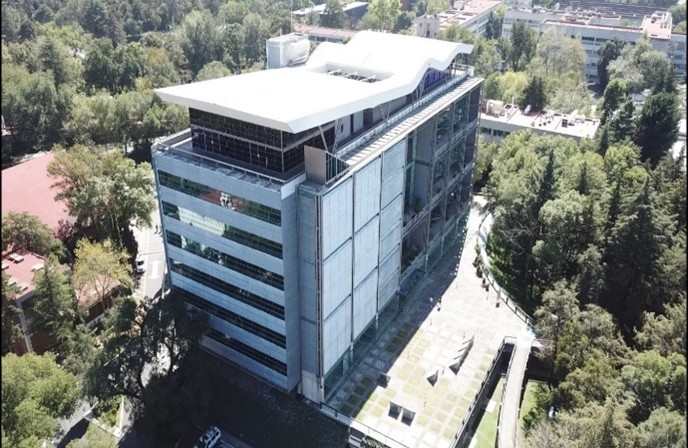
Location
Expo
The event has allocated an area for companies to have a space to showcase their products.
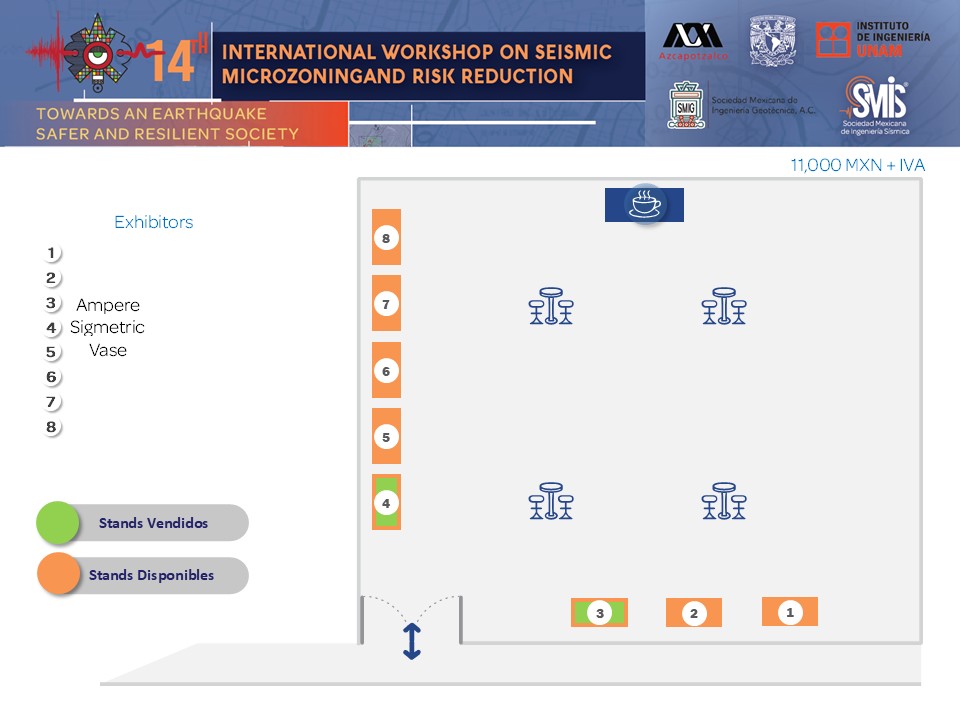
AccommodationHotel Reccommended with special rates for the group
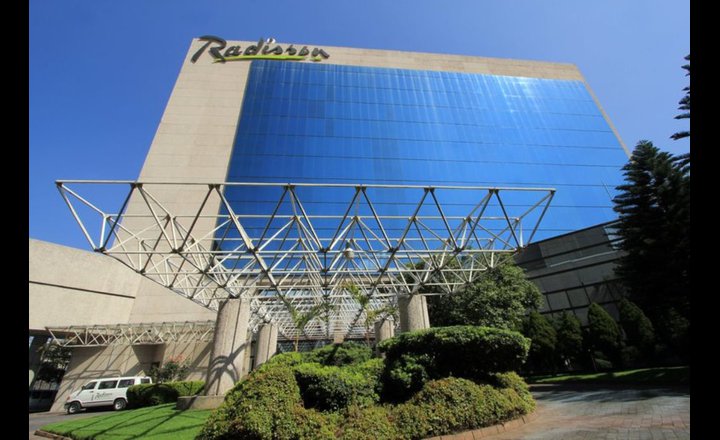
Radisson Paraiso Hotel

Single Room, no meals
90 USD VAT included

Double Room, no meals
90 USD VAT included
To obtain the Hotel special rate for the group, when contacting the Hotel give the next Group Code: «SMIS CDMX».
LocationCúspide 53, Parques del Pedregal, 14020 Mexico City
Committees
Organizing Committee
Francisco J Sánchez-Sesma (UNAM), Mexico (Chair)
Jorge Aguirre González (UNAM), Mexico (Vice-Chair)
Program Committee
Miguel Angel Mánica Malcom (SMIG), Mexico, (Chair)
Luis Pinto (SMIS), Mexico, (Chair)
Leonardo Ramirez Guzmán (UNAM)
Eduardo Reinoso Angulo (UNAM)
Scientific Committee
Takahisa Enomoto (TU), Japan
Mercedes Feriche (Granada Univ), Spain
Koichi Hayashi (DPRI, Kyoto Univ), Japan
Manuel Navarro (Almería Univ), Spain
Luciano Roberto Fernández Sola (UAM),Mexico
Sergio Molina (Alicante Univ), Spain
Mario Ordaz Schroeder (UNAM), Mexico
Efrain Ovando Shelley (UNAM), Mexico

